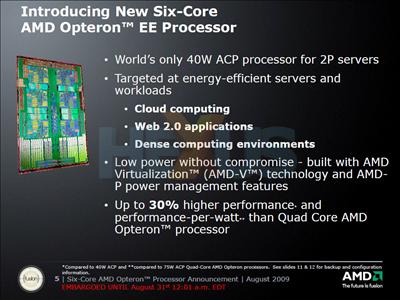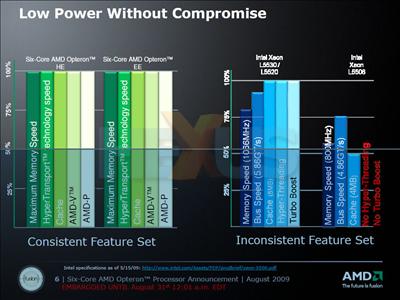EE CPU
So what's different about the Opteron EE? As the slide below shows, it's relatively energy-efficient and presumably that's what EE stands for.
AMD thinks this will appeal to the makers of dense computing environments such as those used for cloud computing and web 2.0 applications - presumably sites like Facebook. In fact Arnold referred to the disappointment voiced by Facebook's top server techie earlier this year at the latest server CPUs. He was especially unimpressed by their energy efficiency.
Fellow PMM Gina Longoria was keen to point out that AMD achieves this greater efficiency without removing features, claiming this isn't the case with Intel. "The competitor de-features products as they go lower power," she said.
To conclude, both PMM's insisted that the marketplace is changing and that AMD is evolving with it. They observed that AMD hopes to take on Intel in the higher performance segment when it launches the appropriately code-named, Magny-Cours, 12-core CPU in Q1 of next year. They also told us about a low-power platform based around socket C32, which is expected later next year.
AMD's strategy in the server CPU market is not unlike its consumer approach; it can't compete on outright performance, so it's putting the emphasis on performance per dollar and per watt. With demand for web-based computing capacity apparently limitless, AMD may find this argument is greeted more sympathetically in the server market.















